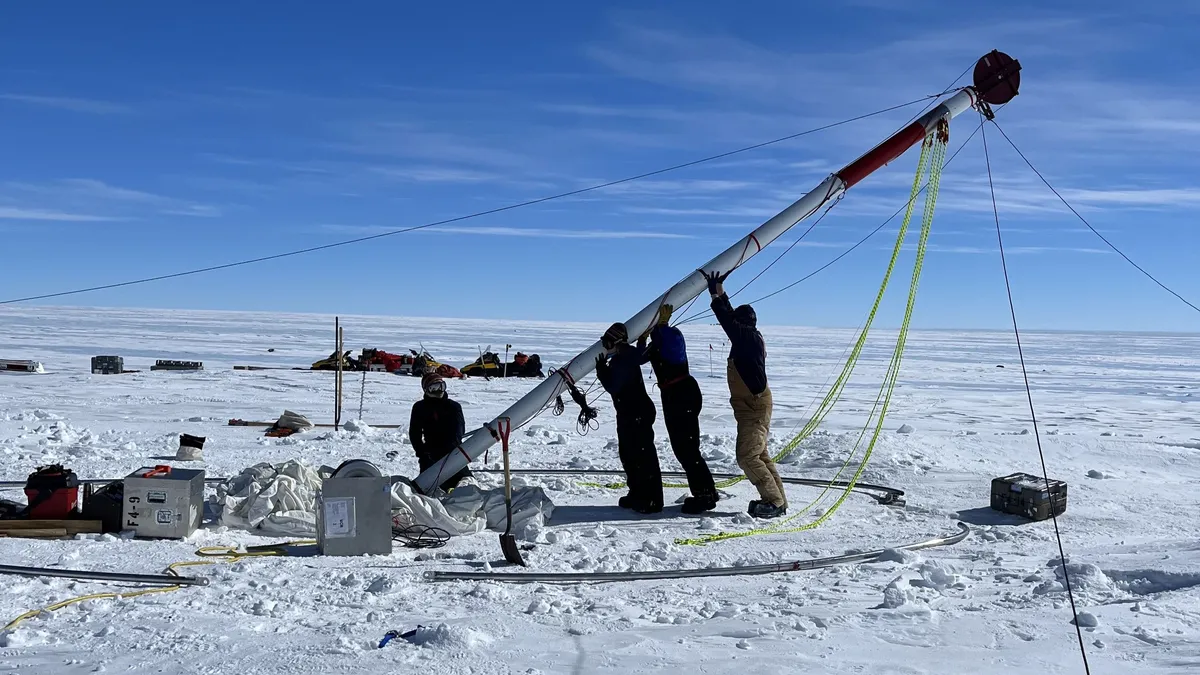
In a groundbreaking discovery, scientists have extracted a 6 million-year-old chunk of ice from Antarctica, marking it as the oldest directly dated ice ever found. This extraordinary ice, along with the air bubbles trapped within it, is more than double the age of the previously oldest-known ice samples, which date back approximately 2.7 million years. This remarkable finding was detailed in a study published on October 28 in the journal PNAS.
According to the study's lead author, Sarah Shackleton from Princeton University and an assistant scientist at the Woods Hole Oceanographic Institution in Massachusetts, ice cores serve as invaluable time machines that provide insight into Earth's ancient climate. Shackleton stated that the Allan Hills ice cores allow researchers to explore a timeline further back than previously imagined, opening a window into the planet's climatic history.
The ice and air contained in this ancient sample date back to the Miocene epoch (23 million to 5.3 million years ago), a period characterized by significantly warmer conditions, higher sea levels, and a rich biodiversity, including now-extinct species such as saber-toothed cats, okapi-like giraffes, Arctic rhinos, and the first mammoths.
Shackleton and her team made this unprecedented discovery in the remote Allan Hills blue ice area of East Antarctica between 2019 and 2023. The Allan Hills ice field is located approximately 6,500 feet (2,000 meters) above sea level. To obtain samples, researchers drilled between 330 to 660 feet (100 to 200 meters) into the ice sheet, employing advanced techniques to analyze the age of the ice cores.
To date the excavated ice cores, the researchers measured the radioactive decay of argon isotopes found in the air pockets within the ice. Additionally, by tracing oxygen isotopes in the cores, they determined that the Allan Hills region has experienced a steady cooling of approximately 22 degrees Fahrenheit (12 degrees Celsius) over the past 6 million years. This finding highlights the long-term climatic shifts that have shaped our planet.
While Antarctica and Earth in general have cooled over the millennia, human activities are now accelerating global warming through the release of significant quantities of heat-trapping greenhouse gases into the atmosphere. The study authors emphasized that by examining the ice cores, they can decode ancient levels of greenhouse gases and ocean warming, providing critical insights into the natural drivers of climate change throughout Earth's history.
The Allan Hills region has preserved this ancient ice due to a combination of known and unknown factors, including near-static surface ice movement and rugged mountainous terrain that stabilizes the ice. Shackleton noted, "We're still working out the exact conditions that allow such ancient ice to survive so close to the surface." It is likely a result of strong winds and extreme cold, which together prevent the accumulation of fresh snow and slow the movement of ice.
This combination of conditions makes the Allan Hills one of the best locations in the world for discovering shallow, ancient ice, albeit one of the most challenging environments for conducting field research. The findings from this study not only expand our understanding of Earth's climatic history but also underscore the importance of preserving such ancient records in the face of ongoing climate change.